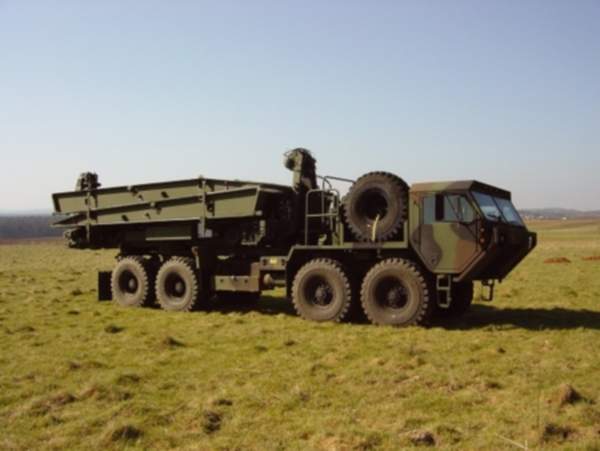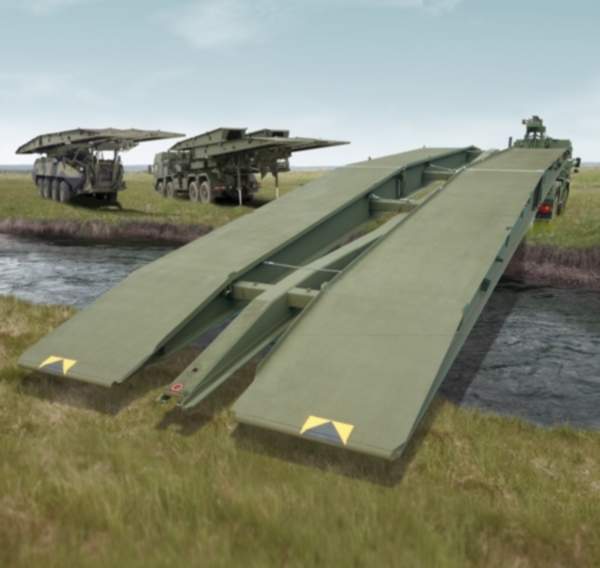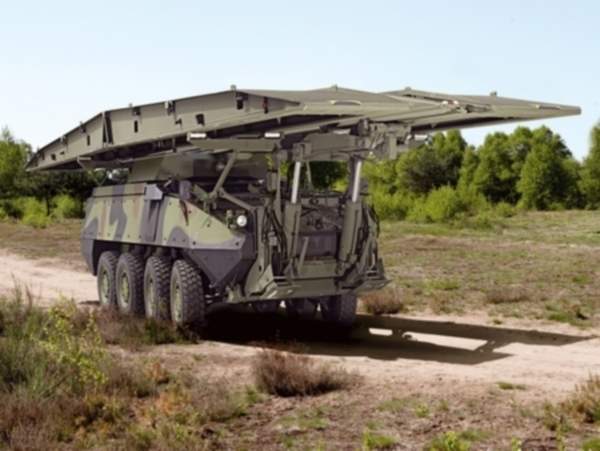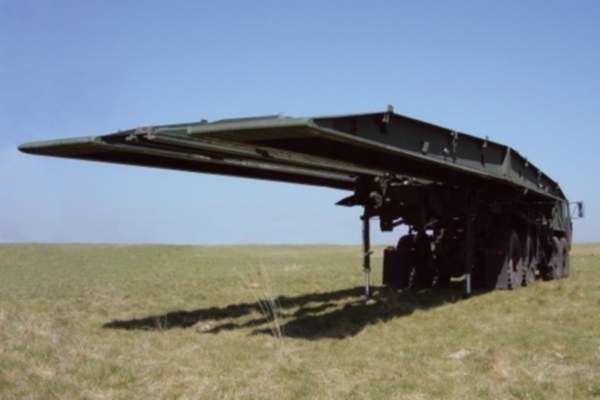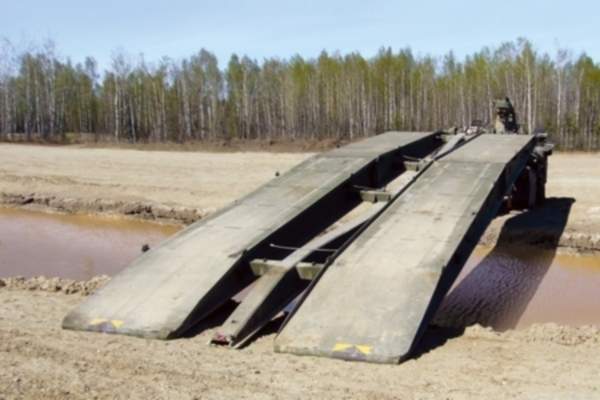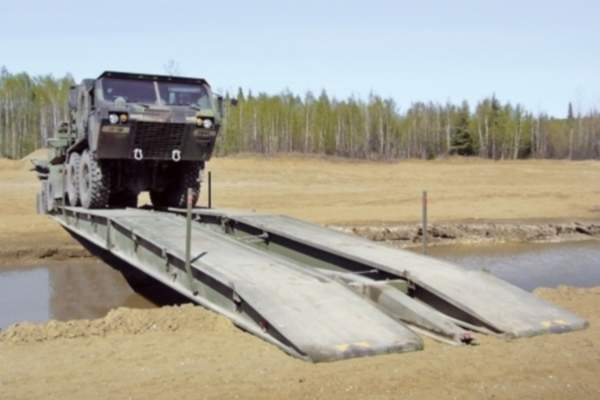The REBS (rapidly emplaced bridge system) is a light dry-gap bridge developed by the General Dynamics European Land Systems (GDELS) for the US Army. It was designed to provide tactical bridging capability for highly mobile mechanised infantry forces such as the Stryker brigades of the US Army.
REBS has been recently displayed at the LAAD 2011 defence exhibition held in Rio de Janeiro, Brazil.
In 2002, the US Army TACOM (Tank Automotive and Armaments Command) placed an order with the GDELS for a total of 20 REBS. General Dynamics teamed with AM General for the US Army REBS programme.
The US Army successfully evaluated the REBS prior to the issue of type classification and full material release in April 2007. The system entered service with the US Army in the same year.
REBS armoured bridging system design
REBS is designed based on the proven BEAVER armoured vehicle launched bridge (AVLB) system. REBS uses proven components and identical bridge sections. The bridge components are made of high-tensile aluminium.
The system integrates a transport and launching pallet, launcher, launch beam, two bridge halves, hydraulic system, diesel-hydraulic power source and electrical control system.
The expanded bridge will have an overall length of 13.8m, width of 3.35m, track width of 1.20m and a height of 0.56m. The total weight of the bridge is 4,800kg. REBS allows the crossing of unprepared gaps up to 13m for wheeled and tracked vehicles weighing up to Military Load Class 50 (MLC 50).
REBS bridge laying performance
The horizontally free-launched REBS system is operated by a crew of two. The remotely controlled hydraulic launching and retrieving sequence is carried out from the truck-mounted bridge adapter pallet using an integrated launcher. The pallet can be mounted on PLS trucks within 10t to 15t range.
The transport truck or the pallet-integrated diesel-driven hydraulic system provides power for the operation. The launcher pallet also features an electrical control system and independent diesel-hydraulic power source.
The REBS bridge can be deployed by various types of armoured fighting vehicles using adaptable bridge launching KIT (ABLK). The ABLK enables the vehicle crew to launch the system within 30 minutes.
The coupled bridge is lifted on the top of the armoured fighting vehicle using the kit and two bridge halves are adjusted one on top of the other during the movement.
The bridge is then transferred to other crossing site and launched again under armour protection. The REB-ABLK has a laser range finder and a camera.
The ABLK can be easily fitted to and removed from the vehicle. The lower silhouette achieved by the horizontal free launch reduces enemy reconnaissance.
REBS transporter vehicle
The standard transporter vehicle of the REBS is the US Army M1977 CBT common bridge transporter (CBT).
The bridge mounted on the truck will be deployed in less than ten minutes. The vehicle along with the bridge will weigh 9,450kg. The CBT is used as a prime mover for the REBS supporting the Stryker brigade combat team (SBCT).
It also loads, launches and recovers the ribbon bridge, improved ribbon bridge and heavy dry support bridge using the bridge adapter pallet (BAP). The BAP is equipped with a winch to control the launch of bridge bays as well as to recover the bridge bays.
The REBS can also be mounted on 8×8 armoured fighting vehicles such as Stryker and Piranha III. The system can be adopted by most of the vehicles due to its flexible size, weight and transportability.
REBS mobility
REBS including bridge and pallet is airportable by C-130 Hercules, C-160, C-17 Globemaster, C-5 Galaxy and Airbus A400M aircraft.
The expanded bridge can also be carried as underslung load by a CH-47 helicopter. The ABLK is airportable by any aircraft with a payload capacity of more than 1,800kg.
US Defence Sector: Market Opportunity and Entry Strategy, Analyses and Forecasts to 2015
Detailed analysis and forecasts of the US defence market are available from our business information platform Strategic Defence Intelligence. For more information click here or contact us: EMEA: +44 20 7936 6783; Americas: +1 415 439 4914; Asia Pacific: +61 2 9947 9709 or via email.

